Click on images to enlarge
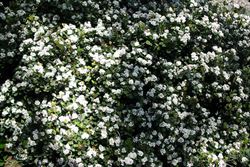
habit (Photo: Sheldon Navie)
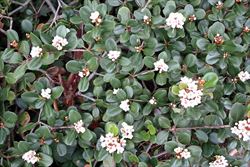
habit (Photo: Sheldon Navie)
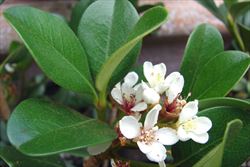
close-up of leaves and flowers (Photo: Forest and Kim Starr, USGS)
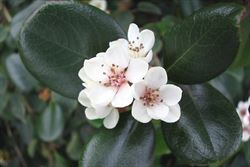
close-up of flowers and leaves with almost entire margins (Photo: Sheldon Navie)
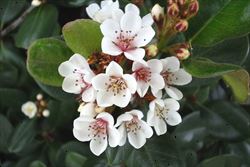
flower buds and flowers (Photo: Sheldon Navie)
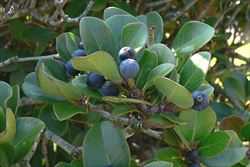
leaves and mature fruit (Photo: Jackie Miles and Max Campbell)
Scientific Name
Rhaphiolepis umbellata (Thunb.) Makino
Synonyms
Laurus umbellata Thunb.
Rhaphiolepis indica (L.) Lindl. ex Ker Gawl. var. integerrima (Hooker & Arnott) Kitam. forma umbellata (Thunb.) Hatus.
Rhaphiolepis umbellata (Thunb.) Makino var. umbellata
Family
Malaceae (New South Wales)
Rosaceae (Queensland, the ACT, Victoria, Tasmania, South Australia and Western Australia)
Common Names
Indian hawthorn, Japanese hawthorn, oriental hawthorn, round-leaf hawthorn, roundleaf hawthorn, Sexton's bride, yedda hawthorn, yeddo hawthorn
Origin
Native to eastern Asia (i.e. eastern China, Korea, Japan and northern Taiwan).
Naturalised Distribution
Occasionally naturalised in south-eastern Australia (i.e. naturalised in the coastal districts of southern New South Wales and sparingly naturalised in Victoria). Also naturalised on Norfolk Island and possibly naturalised in the coastal districts of central and northern New South Wales.
Notes
Japanese hawthorn (Rhaphiolepis umbellata) is regarded as an environmental weed in some parts of New South Wales. For example, it is listed as an environmental weed in the wider Sydney and Blue Mountains region, in Byron Shire on the north coast, and in the South Coast region. It is also listed as a weed of bushland in the Stony Creek Catchment in suburban Melbourne.
Japanese hawthorn (Rhaphiolepis umbellata) is very similar to Indian hawthorn (Rhaphiolepis indica) and it is often mistaken for this species, hence its distribution and impact in Australia may be underestimated. Like Indian hawthorn (Rhaphiolepis indica), this species is cultivated as a garden ornamental and is spread into nearby bushland by birds and other animals that eat its fruit.

